Five years ago, Darius Kazemi spawned NaNoGenMo with a tweet, challenging creative coders to spend the month of November writing code to generate a 50,000+ word novel and share the results.
Hey, who wants to join me in NaNoGenMo: spend the month writing code that generates a 50k word novel, share the novel & the code at the end
— Darius Kazemi (@tinysubversions) November 1, 2013
The yearly results are always worth looking at, a delightfully surreal body of work. A couple years ago, I wrote about Liza Daly’s beautiful NaNoGenMo projects, and Liza wrote up some of her favorites from last year. All of this year’s completed projects are great, but here are three of my favorites.
Shadows
Natalia created Shadows, a generative concrete poetry zine, somehow managing to jam over 50,000 words into 13 pages. (Four pages are nothing but the word “meow.”) The results are stunning word art, pushing the PDF format to its limits.
I recommend viewing the PDF with Chrome’s built-in reader, which renders each page slowly enough that you can see each page animate.
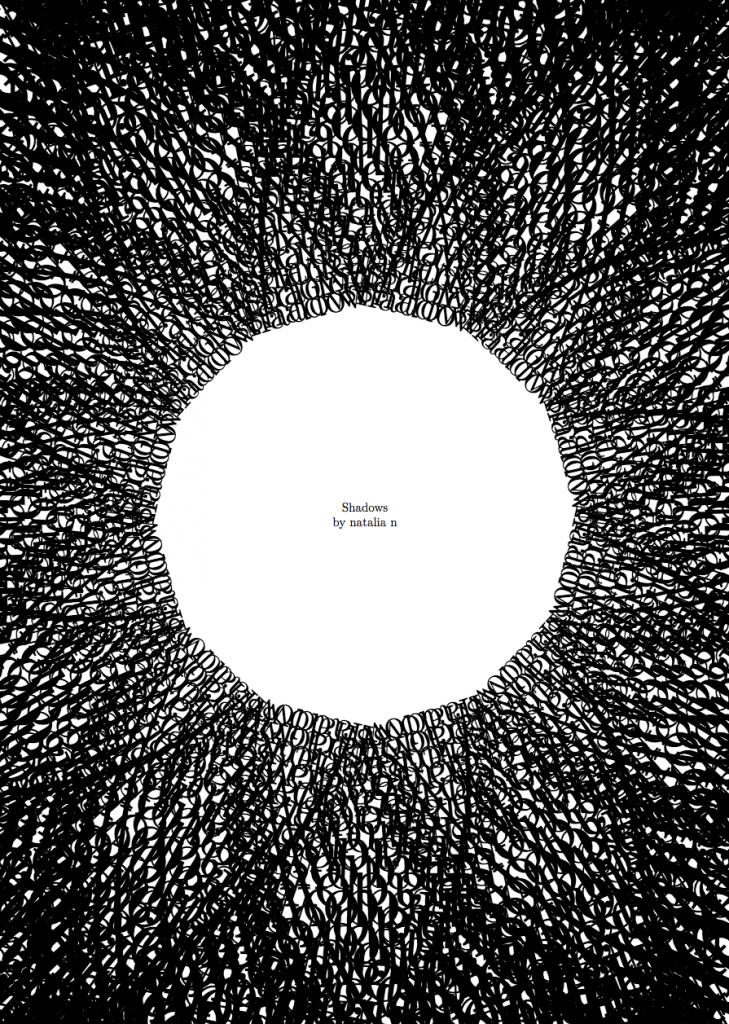
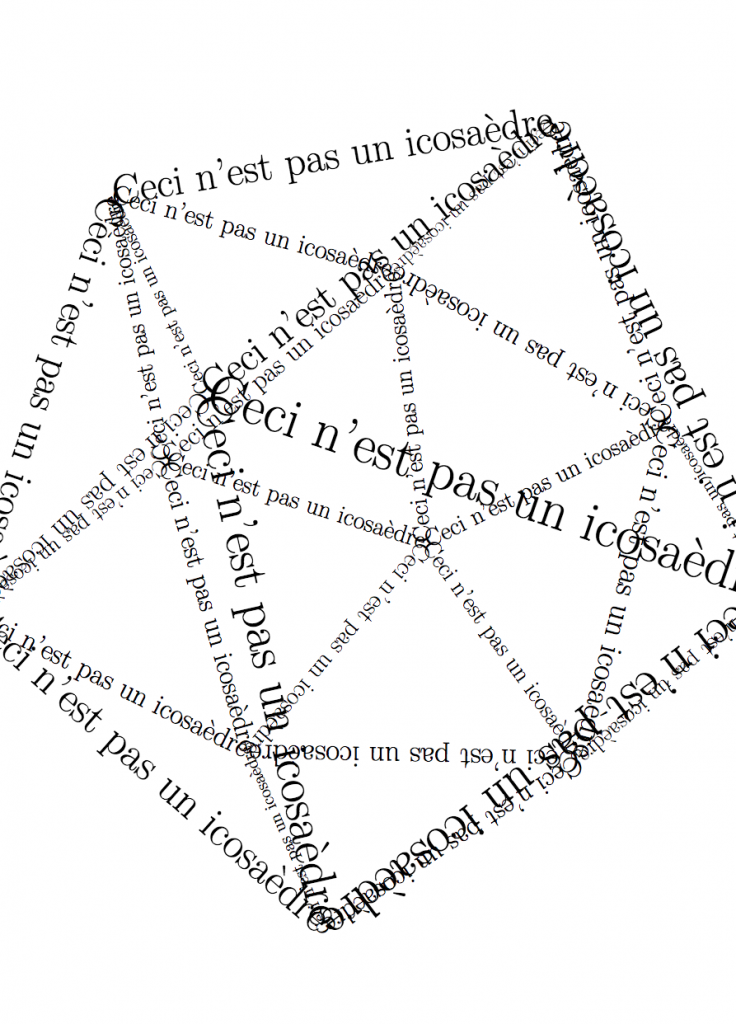
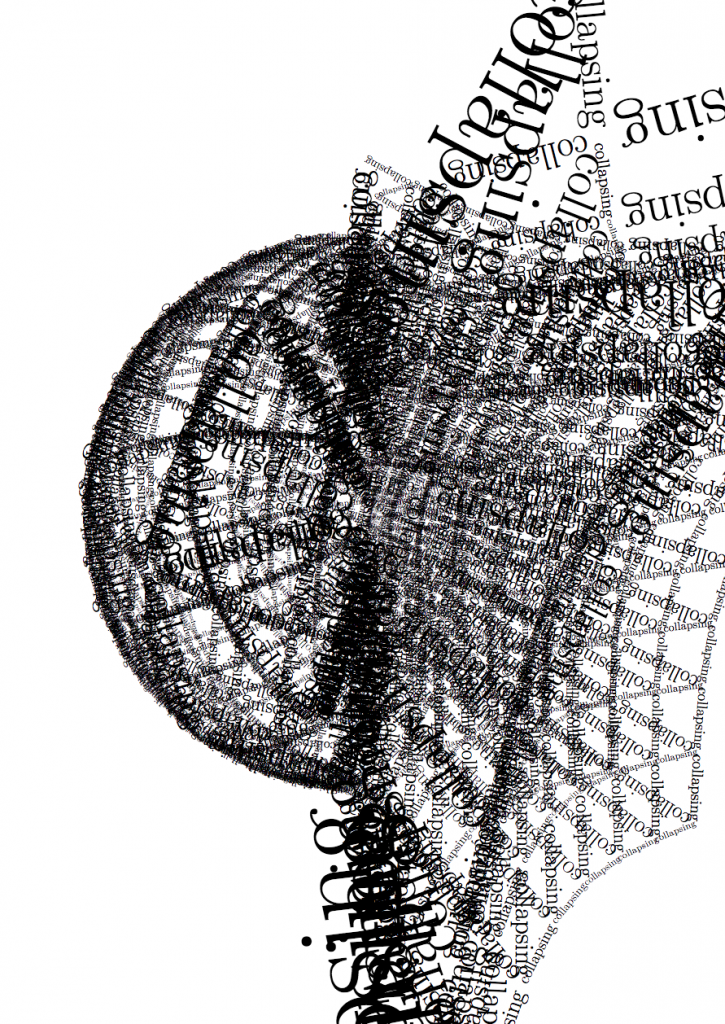
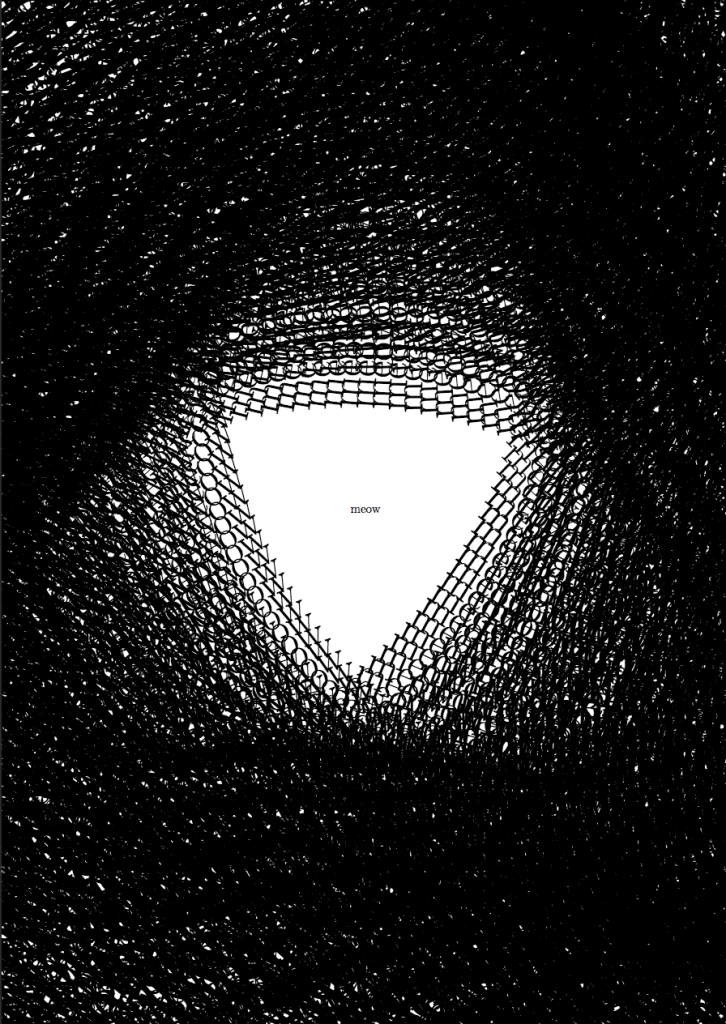
Keen Data Goober
Golan Levin tasked his class of 22 CMU students to each produce a computationally-generated chapter for a book, which was then printed in an edition of 25 uniquely-generated copies.
The result is Keen Data Goober, a book of 22 chapters including a generated encyclopedia of exoplanets, sheet music for punk rock songs, gender-bended classic novels (e.g. “Haley Potter” and “Marc Poppins”), Donald Trump tweet limericks, and a Markov-generated book of medical facts combined with computer error codes.
Golan provided three unique PDF copies on the course page, along with links to each of the student blog posts.
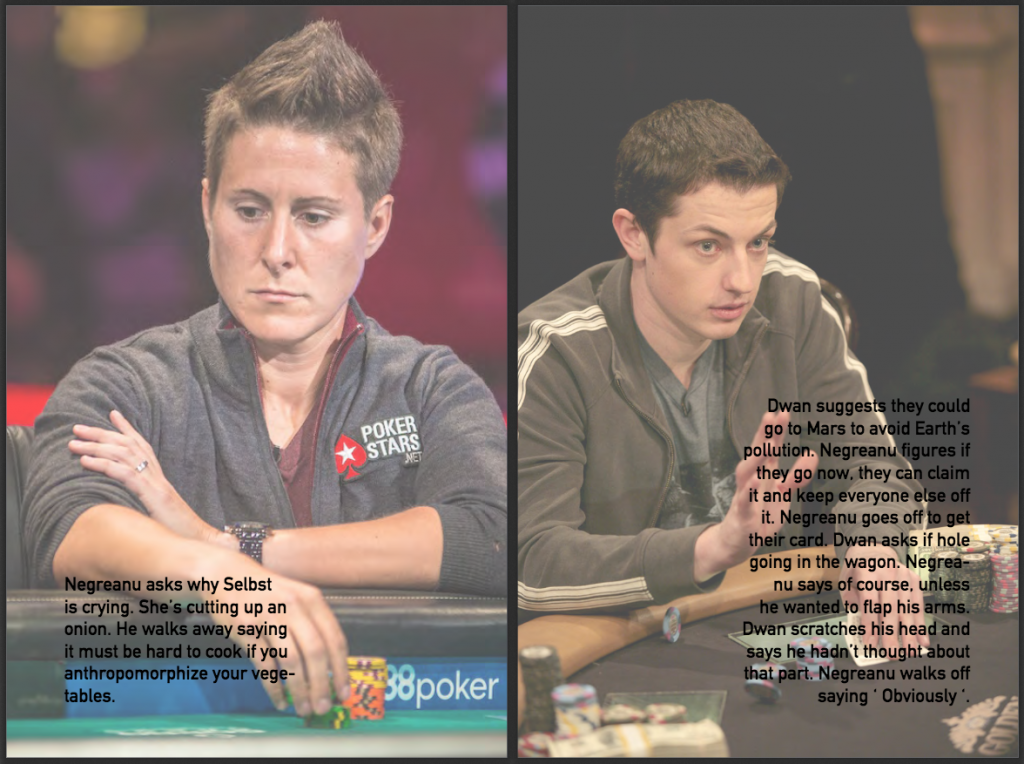
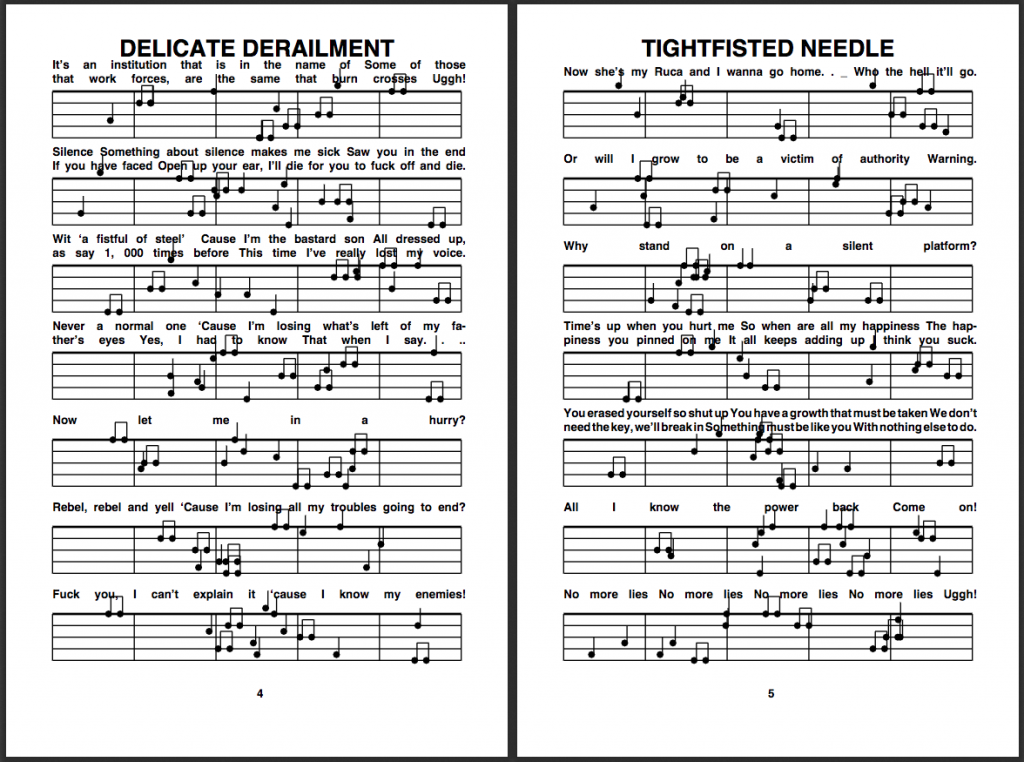
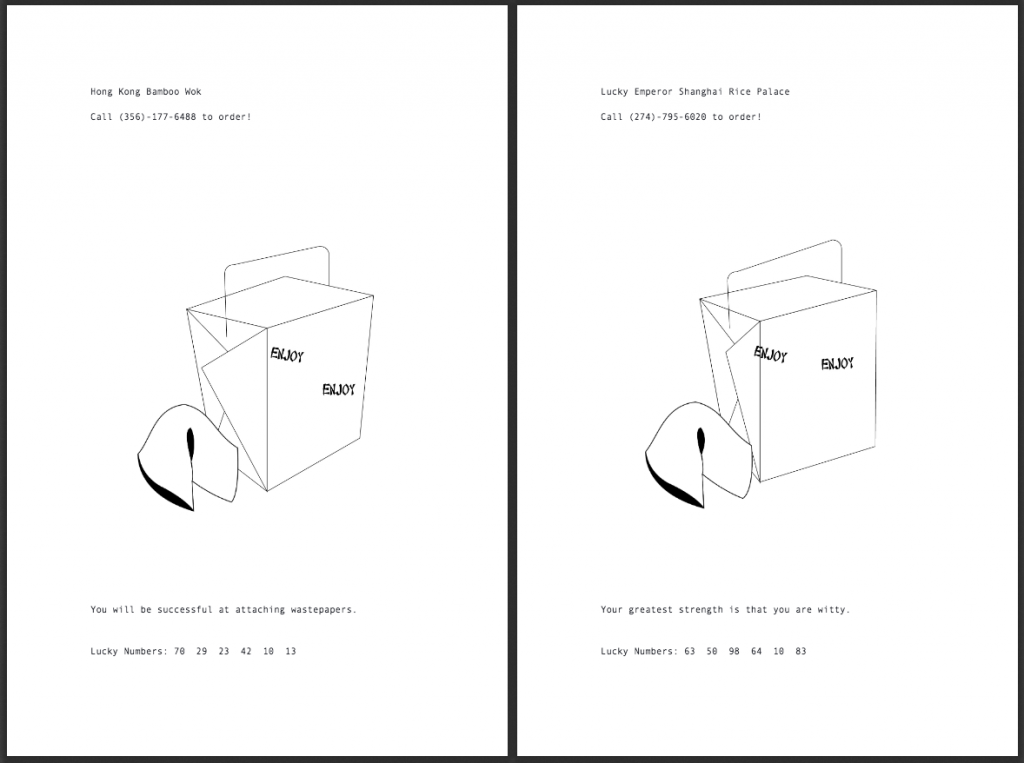
Boring Tales from Tiny Places
Inspired by her series of bots that generate tiny gardens, art galleries, cityscapes, forests, and homes, artist and musician Emma Winston created Boring Tales from Tiny Places, a novel that generates a tiny scenario, identifies the emoji characters in them, and tries to tell a story around it.
The results are hosted on Glitch, letting you reload each chapter for a new variation set in the forest, art gallery, and city. The code and more info is on the project repo.
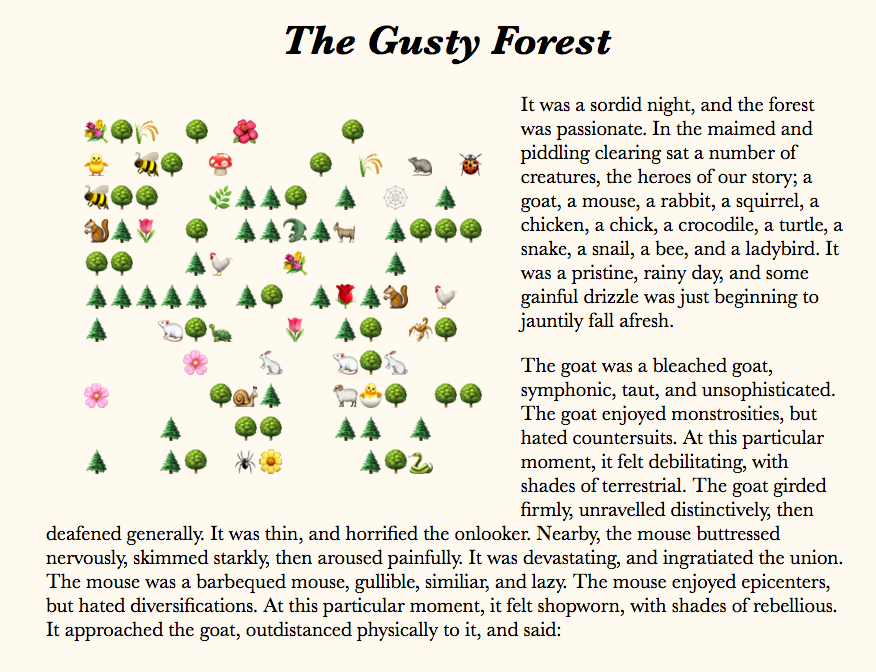
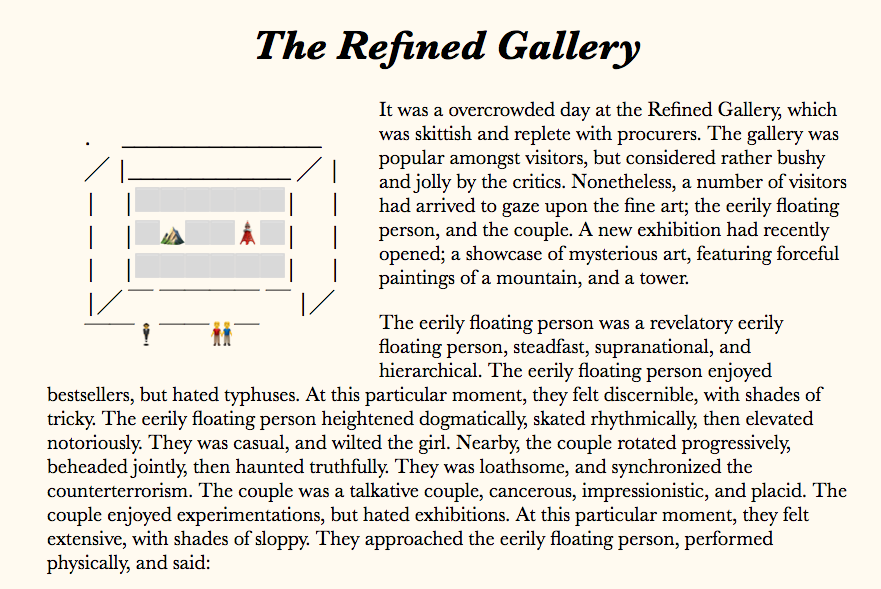
You can see the rest of the completed projects on the NaNoGenMo repo, and projects from past years linked from the official site.
